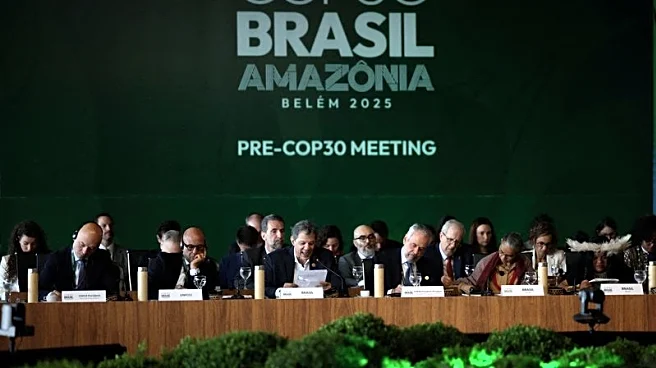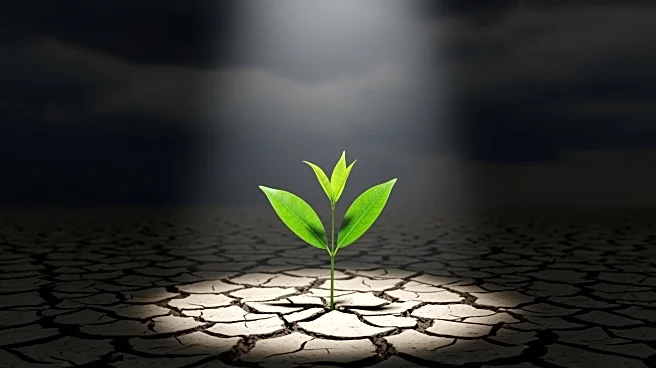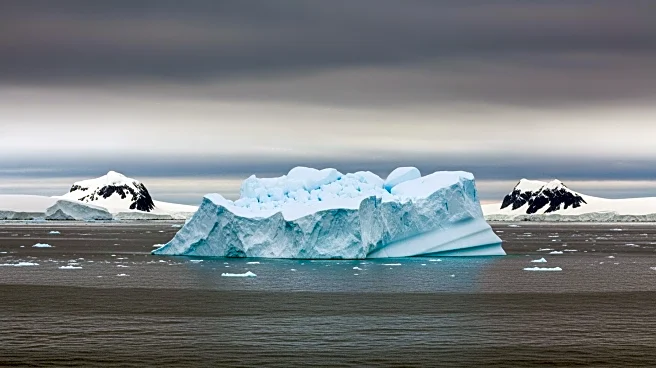What's Happening?
Scientists at UC Riverside have identified a hidden feedback mechanism within Earth's carbon cycle that could potentially lead to an ice age. This discovery challenges previous understandings of how Earth regulates its climate through rock weathering,
a process where rain absorbs carbon dioxide and reacts with rocks, eventually trapping carbon on the ocean floor. The new findings suggest that increased CO2 levels and global temperatures could lead to a cooling overshoot due to enhanced plankton growth and subsequent carbon burial. This mechanism could cause Earth's climate to swing dramatically, potentially triggering an ice age.
Why It's Important?
The discovery of this feedback mechanism is significant as it provides a deeper understanding of Earth's climate regulation processes and their potential consequences. If the model predictions are accurate, the current trajectory of global warming could eventually lead to extreme cooling, impacting global ecosystems and human societies. This underscores the importance of addressing current CO2 emissions and climate change, as the long-term effects could be more severe than previously anticipated. The research highlights the complexity of Earth's climate system and the need for comprehensive strategies to mitigate climate change.
What's Next?
While the study suggests that a cooling overshoot could occur, the timeline for such an event remains uncertain, potentially spanning tens of thousands of years. However, the immediate focus remains on reducing CO2 emissions to prevent further warming. The findings may influence future climate models and policies, encouraging more robust efforts to limit greenhouse gas emissions. Researchers and policymakers may need to consider these new insights when planning long-term climate strategies.
Beyond the Headlines
The study raises ethical and cultural questions about humanity's role in altering Earth's climate and the responsibility to future generations. It also highlights the need for interdisciplinary approaches to climate science, integrating geological, biological, and atmospheric studies to fully understand the implications of human activity on the planet.















